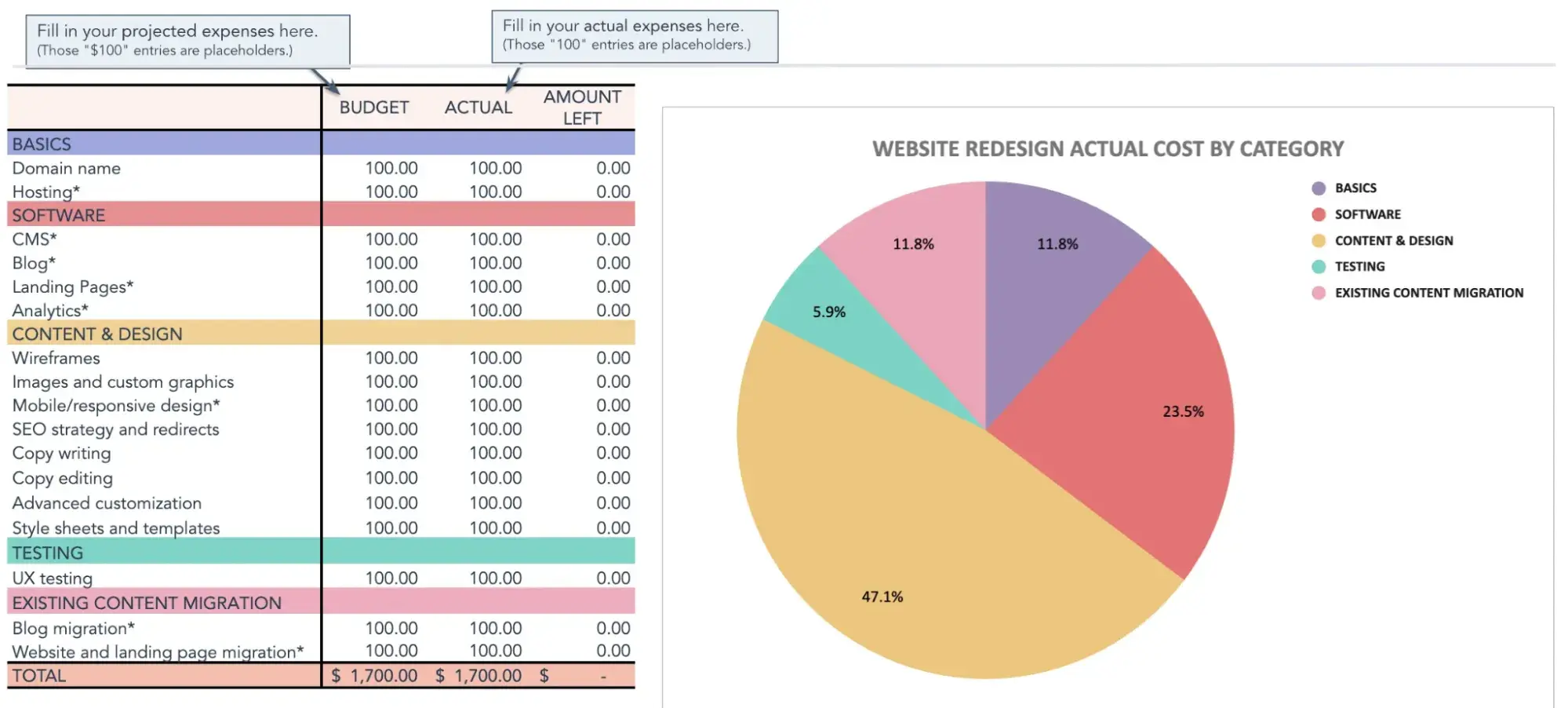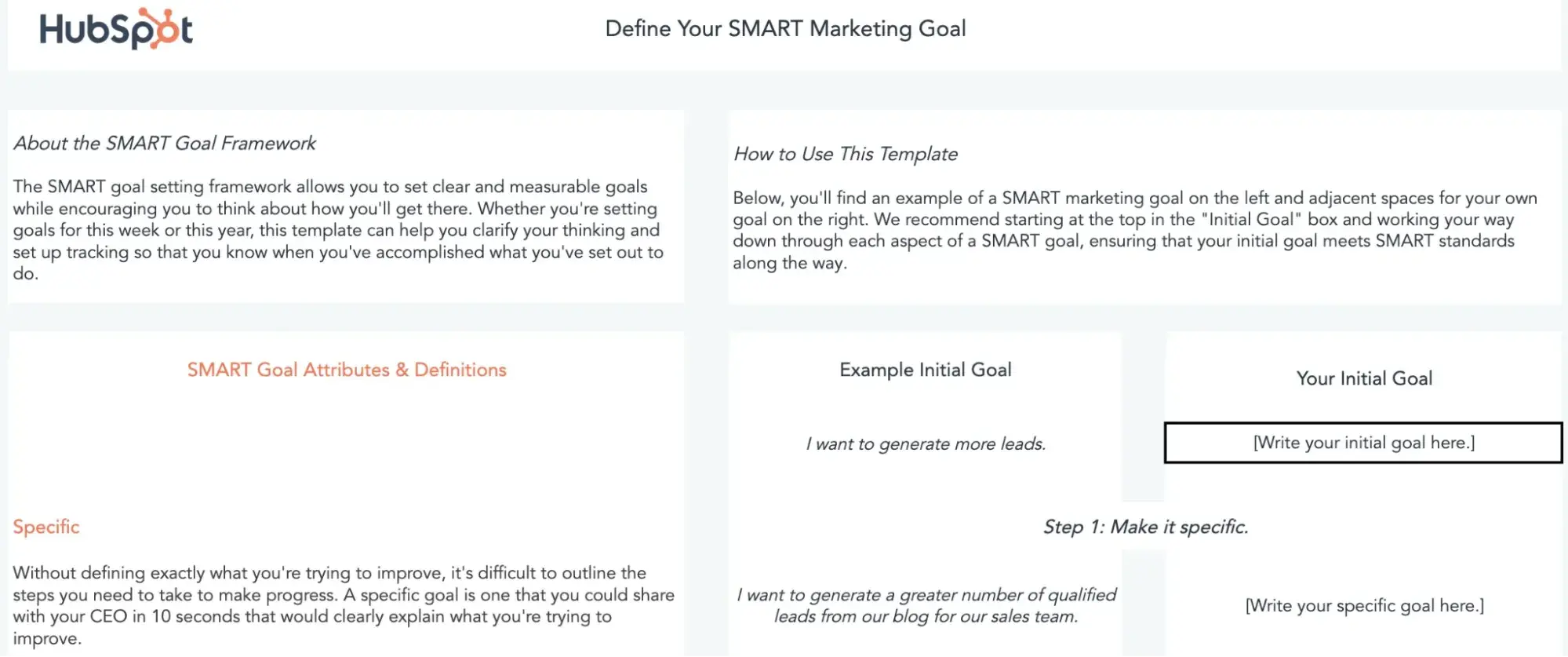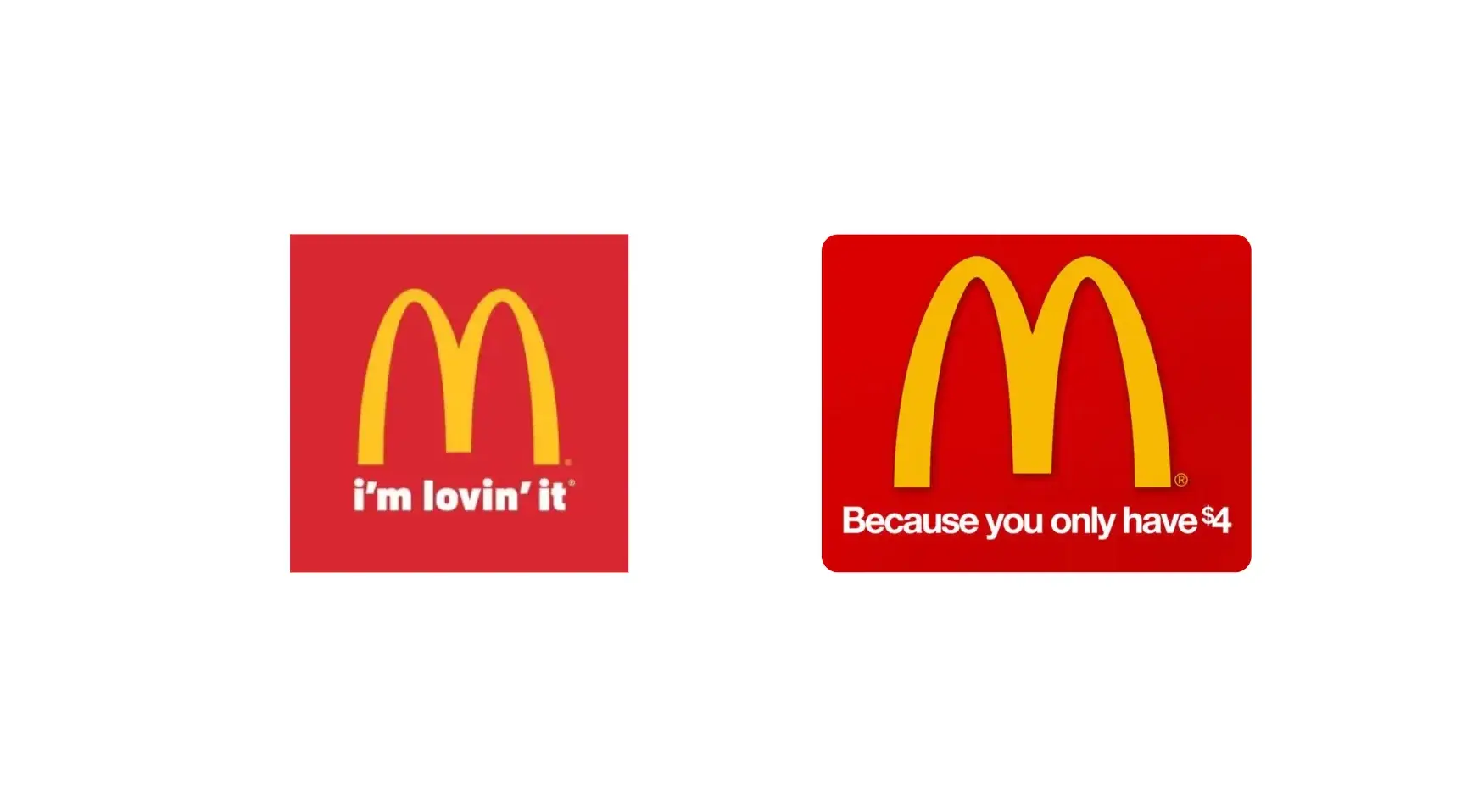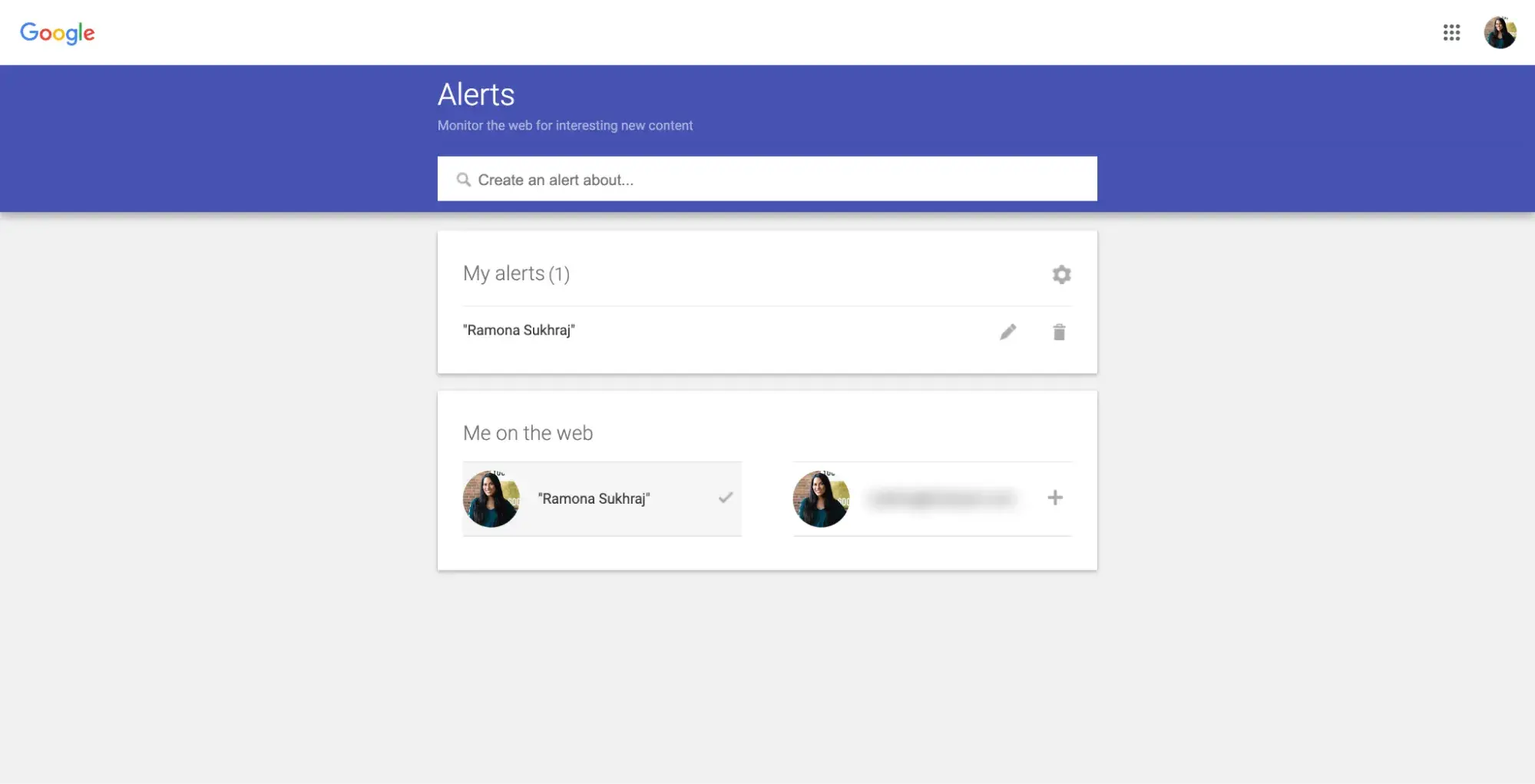To be candid, I have a love-hate relationship with social media.
![Download Now: The 2024 State of Social Media Trends [Free Report]](https://i4lead.com/wp-content/uploads/2024/09/3dc1dfd9-2cb4-4498-8c57-19dbb5671820-1.png)
Sometimes, I’m annoyed at how exciting those “likes” can be.
At others, I’m ecstatic at the social media advertising ROI (return on investment) my teams can generate. It just keeps me coming back for more — and I know I’m not alone in this feeling.
According to our 2024 State of Marketing & Trends Report, marketers consider social media their biggest source of ROI alongside their website or blog. Paid social media content follows closely in the second spot.
But what platforms and tactics can deliver the most ROI for your business?
Let’s dive into the latest findings from HubSpot’s 2024 Social Trends Report to answer those questions and hear from experts at Brandfolder, Sprout Social, Rakuten Advertising, and more.
Table of Contents
What is social media ROI?
Simply put, social media ROI is exactly what it sounds like — the return on investment you get from your social media marketing and advertising campaigns.
It measures the results you make or receive compared to how much you spend.
Depending on your goals, this can be done using a number of different metrics.
For instance, if your goal is to build brand awareness, you might prioritize metrics demonstrating reach or engagement — such as new followers, impressions, audience growth rate, or social shares.
These tend to be the most common, in my experience, but other metrics to measure social media marketing and advertising ROI include likes, comments, or sales.
Arguably the most direct approach is to zero in on revenue.
How do you calculate social media ROI?

Our survey found that measuring ROI is one of the five biggest challenges marketers face with social media. That’s out of 22 possible options.
Numbers and I don’t always get along, so I get where they’re coming from. But thankfully, measuring social media ROI is pretty simple.
This formula can be used with revenue in mind:
Social media ROI = (Total Revenue – Total Investment) / Total Investment
“Total revenue” is the amount of money generated from your campaigns, while “total investment” is the amount of money you put in (like resources, labor cost, cost per click, etc.).
When you run your calculation, a negative result means you spent more money on your campaigns than you got back — womp — and a positive result means the opposite.
Let’s illustrate with an example. Say you spent $500 on social media advertising last quarter and made $1250. Using our formula:
= (1250–500) / 500
= (750) / 500
= 1.5
Your social media advertising ROI is 1.5. This means you made $1.50 for every dollar you spent.
Note: This formula will give your ROI in the dollar amount, but if you’d like it expressed in a percentage, follow: (Total Revenue – Total Investment) / Total Investment x 100
Check out this helpful guide by my teammate Flori Needle to learn more about what a good social media advertising ROI is and how to calculate it.
Which social media channels have the best ROI?

HubSpot’s 2024 Social Media Trends Report found YouTube provides marketers with the highest ROI while Meta-owned Facebook and Instagram trail closely behind.
TikTok follows, but X (formerly Twitter), LinkedIn, and other small platforms clock in with less than 10% of marketers vouching for them.
This list is likely not surprising. The top five are some of the largest and most active social media networks. Plus, those marketers reported delivering the highest ROI when working with influencers/creators.
Let’s dig deeper into the top four to learn why, and I’ll share some tips on getting the most out of them.
1. YouTube
Ranking third in our list last year, YouTube has made a huge jump to our #1 social media channel for ROI this year for marketers — and more than half (54%) plan on increasing their investment in the platform this year.
But why exactly?
First off, there’s reach.
YouTube receives about 30 billion monthly visits and commands an audience of over 2.5 billion people (including over 100 million Premium subscribers). Every generation, from alpha to boomers, is on the platform. This means there’s a strong chance your audience is, too.
Our survey found that marketers think YouTube has the best audience targeting tools. This makes reaching your audience easy with its paid ads.
The platform also has a very low barrier to entry.
Setting up a YouTube channel is free, and with a smartphone and some editing software, you can create content at little to no cost. Throw in AI and you can streamline your effort, too.
This automatically sets you up for a great return on your investment.
YouTube is also one of the most respected names in video, and consumers across the board have shown a strong preference for video content.
How to Get the Most ROI Out of YouTube
Team up with creators or influencers.
21% of marketers say YouTube (alongside Facebook) offers the highest ROI when working with influencers or creators. That’s the highest of all platforms.
Read more in the Ultimate Guide to Influencer Marketing.
Experiment with both long and short-form content.
While known for its long-form content, YouTube Shorts can be used to capitalize on the user preference for short-form video. (More on that later.)
Check out our free YouTube Marketing Course to get started.
2. Facebook
With over 3 billion monthly active users, Facebook is the most popular social media platform worldwide — despite what much of Gen Z may tell you.
Baby boomers and Gen X name it one of their top favorite platforms, while millennials and Gen Z frequent it for events and Facebook Marketplace.
However, its large audience is just one reason Facebook remains the social media platform with the second highest ROI since last year. And also why 53% of marketers plan to increase their investment in it this year.
According to our survey, Facebook offers the second-best audience targeting tools out of all social media platforms, only losing out to YouTube by 1%.
The social media giant lets you target by demographics, interests, and even previous behavior — like visiting your website or attending one of your Facebook Events.
These paid ads can appear in a user’s newsfeed or Messenger app and include formats like carousels, boosted posts, and videos. Marketers can also leverage Facebook Lead Ads to get users to fill out a lead generation form without leaving the social platform. Here’s an example from YSL Beauty.
Nicole Ondracek, HubSpot’s Paid Advertising Senior Marketing Manager, agrees that Facebook is an incredibly viable channel.
“At HubSpot, Facebook is a valuable channel for us in driving return on ad spend. A main reason why is that we can provide our content to a relevant audience using Facebook’s audience targeting features. For instance, Facebook’s lookalike audiences allow us to go after people who look like our current customers,” she shared.
“Facebook’s algorithm is great at finding similar audiences who are likely to convert, which is why we see a positive return on investment going after these types of audiences.”
How to Get the Most ROI Out of Facebook
Over the years, I have seen Facebook evolve into one of the hardest places to make an organic impact.
Facebook Groups still prove to get traction and you certainly want to maintain a presence on the platform with a business page. But depending on your goals, your time and effort is likely best spent on Facebook Ads.
Here are a few ways to get the best ROI with that in mind:
Boost posts.
Is a post on your Facebook page getting a lot of engagement or clicks? Think of that as a successful experiment proving your audience enjoys that content. It likely has great potential to perform well as an ad through “boosting.”
Learn more on boosted posts.
Try retargeting.
Retargeting means you can target users on Facebook with ads related to pages they’ve visited on your website or actions they’ve taken. This helps make the ads feel more personalized, relevant and, in turn, more likely to boost your ROI.
Learn more on how to get the most out of your Facebook Ads budget.
3. Instagram
I was surprised to see this, but Instagram actually fell two spots on our list of social media platforms with the highest ROI from last year. But no need to panic.
The margin is small, and 52% of marketers plan to increase their Instagram investment next year.
With over 2 billion monthly active users, Meta-owned Instagram engages a large global audience, offering opportunities for many types of businesses.
Marketers can increase reach and boost sales through non-organic means like Instagram Ads or shoppable posts. In fact, our survey found that 71% of marketers who sell products on Instagram rated it as high ROI more than any other channel.
Plus, 50% of users are more interested in a brand after seeing its ads on Instagram.
(After being hit with ads like this one for Candlelight Concerts for months, I finally caved in February and it was amazing.)

But it shines with generating ROI from organic content as well.
90% of users follow at least one business on Instagram. And with high-engagement features like Stories, Reels, carousels, and Live streaming, there’s no shortage of opportunities to get creative.
Instagram is also the social platform with the second-highest ROI when working with influencers/creators (20%), missing the top spot by just 1%.
How to Get the Most ROI Out of Instagram
Team up with creators or influencers.
Instagram missed our spot for the channel with the highest ROI when working with influencers by just one percent, so they certainly deserve some attention in your social media strategy.
Whether you’re collaborating on content, conducting an interview, or simply sponsoring a post, take some time to explore your options.
Read more in our article, “Influencer Marketing Strategy: How to Build a Plan Creators & Customers Will Love [+ Templates]”
Post Stories with stickers.
We already know Instagram Stories grab eyes with their prime real estate at the top of the app’s home screen, but the benefits don’t stop there.
Stickers can help make content more dynamic and interactive by soliciting options and clicks. You can use Stickers to create polls, ask and answer questions, or link viewers to your website.
Dig deeper into how to boost your performance on Instagram with our Ultimate Guide to Instagram Marketing.
4. TikTok
I can’t lie to you: TikTok is still a bit of an enigma to me.
Not much is understood about how to please the algorithm, and the types of content that do well are all over the spectrum — from ASMR to talking-head storytelling.
I have a younger cousin who gained over 20k followers from one video, and she still can’t tell you how or why it happened.
Despite all the mystery, TikTok is still the social media platform with the fourth-highest ROI, according to our research.
As of 2024, TikTok has over 1.5 billion monthly active users and is predicted to hit 2.2 billion by 2027. And these users aren’t passive about their engagement.
They spend an estimated 4.43 billion minutes watching videos each day and 30% of daily users have used TikTok Shop.

This growth and passionate engagement has 56% of marketers planning to increase their investment in TikTok next year, the highest of any platform.
Users are not just members of Gen Z either, though they certainly lead the pack. According to Statista, millennials (46%), Gen X (32%), and baby boomers (14%) report using the app as well, though in smaller numbers.
How to Get the Most ROI Out of TikTok
Follow and engage with trends.
Trends are born and they die on social media, and this is especially true on TikTok. One of the easiest ways to start making traction on the platform is by hopping on trending sounds and video styles.
This way, you make yourself relevant to conversations that are already happening rather than trying to steal attention from them.
Dunkin is strong in this area, as seen in this video using the viral “Very Demure” audio from creator Jools Lebron:
And if you click on the audio link, you can see they’re not the only ones.

Try TikTok Ads.
Getting organic traction on TikTok can be difficult, but to speed up the process you can try TikTok Ads. We have an article to get you started.
Pro tip: If you’re a HubSpot user, you can also explore using the TikTok Ads integration with HubSpot. It can be used to:
- Capture TikTok leads in the HubSpot CRM in real time.
- Connect TikTok to HubSpot in under 10 minutes without using code.
- Immediately reach out to new leads from TikTok when they’re most open to chatting.
Which strategies get the most social media advertising ROI?
Now, regardless of the platform, there are certain trends and truths you can follow to help get the most ROI out of your social media efforts.
Here are seven I recommend based on our data, my own personal experience, and insight from other industry experts.
1. Short-form Video
According to our survey, 67% of marketers plan to increase their investment in short-form video in the next year, while 31% will maintain their investment.
And why not? 71% of marketers using the medium already report it has high ROI, the highest ROI out of all content mediums.

We also know consumers love video in general, with Sprout Social finding it the most popular medium on social media. Yet, many marketers find it is underutilized, especially in social media advertising.
Adina Jipa, co-founder of Socialinsider, told us, “A recent study about Facebook video strategy shows that only roughly 15% of the content [on Facebook] is video, while photos represent 38.58%.
Facebook wants to become a video-first platform and favors pages with video content, but for most brands, it is [primarily] a photo-sharing platform.”
Instagram was also public about pushing short-form video content to compete with YouTube and TikTok.
That said, to stand out and increase ROI, consider how you might incorporate video into your social media efforts.
Additionally, consider testing out different video formats across your channels. For instance, Facebook allows brands to create vertical video ads for mobile users, which is also needed for Instagram Story ads.
As Jipa says, “You can use vertical videos on ads to get more clicks. Almost 69% of marketers say video ads outperform image and plain text ads on Facebook, and 81% of Facebook users only access the platform via mobile devices.
“Looking at these behaviors, using vertical video allows you to get more visibility and increase the chances of getting more clicks.”
2. Incorporating Humor
According to our study, humorous content results in the biggest ROI of any content type.
Using humor in marketing and advertising is nothing new. It’s been a strategic move for decades. I mean, I’m still laughing about this Orbit gum commercial 17 years later:
Humor grabs attention, is memorable, encourages sharing, and makes you likable overall. So, look for ways to incorporate it naturally into your social media content.
Oreo does a great job of incorporating humor and current events into its social media content.
3. Repurposing Content for Multiple Platforms
Should you be posting the exact same content and message across all your social media platforms? Of course not — they all have unique cultures and user behaviors, let alone technical specs.
But that doesn’t mean you can’t adapt and repurpose a single piece of content for different platforms.
“Far too often, content is created for one-and-done campaigns or promotions,” Casted’s CEO and Co-founder Lindsay Tjepkema explains.
“This means marketers are working harder and harder to produce more and more constantly, yet ROI and ROE (return on effort) results are disappointing.”
She continues, “To change this, we must stop creating content for content’s sake and focus instead on creating content that educates, entertains, and delights that can be broken down and amplified across all other channels not just once, but many times over.”
To repurpose your content across channels, perhaps you post snippets of a full YouTube video on Facebook, TikTok, or Instagram.
Alternatively, you could take select text from a blog post and repost it on your channels to add value to your existing content. This way you’re repurposing user-generated content across channels.
There are countless ways to refresh and re-use content to appeal to new audiences uniquely without exhausting your social team.
Pro tip: Use AI to expedite the process of repurposing. Ask ChatGPT to write tweets for you based on the copy from a blog. Or, if you use HubSpot, give Content Remix a try.
With Content Remix, Professional and Enterprise-level users of Content Hub can repurpose existing content into new formats.

This can include content hosted on HubSpot (i.e., images, social posts, text messages, ads, and blog posts) or new content you upload to the tool.
4. Aligning your Platform with Your Goal
It’s difficult to achieve results on social without taking the time to set clear goals for your team. But not all social media channels are good for the same goals.
To see the best ROI from social media, make sure that you are choosing the platforms best suited to your needs.
For example, if you’re trying to boost website organic traffic, YouTube may be the way to go. YouTube is owned by Google, and its videos are shown in SERPs. The video platform is also conventionally held as “the world’s second-largest search engine.”
As Brandfolder’s Senior Digital Marketing Manager Amanda Turcotte told us, “In order to achieve a return on your social media investment, you must have clear goals set before any tactical planning takes place.”
“Various social media tactics can be applied differently to each of the platforms, meaning they’ll produce different outcomes. So your goals must be determined up front to ensure they align with your social strategy.”
Pro tip: Use UTM tags for tracking

The only way to know if you’re truly hitting your goals is by being able to track and measure your activity. UTM tracking links are one of the easiest ways to do this.
As Matt Janaway, CEO of MarketingLabs, told us, “Tracking is now more important than ever thanks to the complications of iOS privacy improvements, so to really yield the best ROI, you have to make sure you are using UTM tags on all links.”
“This way, you can correctly track the performance of your campaigns in Analytics and get the data you need to make decisions that can drive more engagement and ROI.”
If you’re a HubSpot user, you can create tracking URLs right within the platform.
5. Establishing Consistency
Once you‘ve determined your social goals, you’ll want to create a consistent brand and strategy so your audience knows what they can expect from you.
What time will you post? What type of content will you post? What will the posts look and sound like?
Establishing these guidelines will also help your team execute more cohesively and efficiently.
Turcotte told us, “To move your team from strategy to action and keep everyone on the same page, it’s crucial to develop a regular posting plan that documents your approach across each channel, where all team members have access.”
Additionally, Agnieszka Jaśkiewicz, Head of Social Media & Community at LiveChat shared:
“Digital templates for creative assets — set to the specifications of the organization‘s core social media platforms — can also add agility to social media managers’ ability to publish, allowing teams to be more timely and quickly act on new opportunities.”
Pro tip: To make posting consistently easier, try using a social posting tool like HubSpot’s Social Inbox Tool or Later.
Jaśkiewicz agrees that creating a strategy and using tools to support your team’s goals is critical for finding success on social channels.
As she put it, “The greatest area of ‘untapped potential’ for most brands comes in streamlining creative workflows.”
“Digital workspaces [and tools] allow creatives and marketers to collaborate from a central location to stage, revise, and produce content, limiting back-and-forth communication and unnecessary steps in production.”
6. Social Commerce
Over the past few years, we’ve seen a rise in social commerce, or the ability to make a purchase without leaving a social platform.
You’ve likely seen this on Instagram and TikTok (see below). And as we discussed earlier, users are taking a liking to it.
Rachael Samuels, Senior Manager of Social Media at Sprout Social, told me she sees social commerce as a great opportunity to continue to increase ROI on social channels as it allows users to take action the second the urge to buy hits them.
She shared, “Social commerce not only provides more seamless buying experiences for customers but equips marketers with the ability to show direct attribution and ROI as a result of their efforts.”
Pro tip: Leverage Meta’s Advantage+ Shopping Campaigns.
It‘s no secret that Meta’s suite of platforms — namely Instagram and Facebook — packs a huge ROI punch. Yomi Arokoyo, VP of Performance Solutions at Rakuten Advertising, attributes this to Meta’s powerful algorithm.
He told us, “Each social platform has improved its algorithm over time to be more intuitive and automated, but none more than Meta. For example, with Meta’s Advantage+ Shopping Campaigns, brands can find new customers in places they never even thought to look.”
Launched globally in 2022, Advantage+ Shopping Campaigns largely rely on AI and automation to find the right audience for your ads (as opposed to manual targeting). On top of that, it even adjusts ad formats to understand which format performs best.
To take advantage of this new tech, Arokoyo recommends employing as much creative differentiation as possible. For instance, add old creative or cut up longer videos into smaller, more digestible clips. This gives the algorithm more data to determine which campaigns are effective.
7. Encouraging Your Employees to Become Brand Ambassadors
One area of major underutilized social media potential? Your employees.
Many users ago, one of my responsibilities at a former employer was running the employee advocacy program. In other words, I created and distributed copy and materials to make it easier for everyone on our team to promote the company’s content and initiatives on their own social media.
It eventually ended because individual platforms began cracking down on third-party publishing. But for many years, it dramatically helped boost our reach, traffic, and engagement.
As Casted‘s Tjepkema explains it, “As consumers, we’re far more driven to engage with user-generated content, yet so many brands spend too much time and money trying only to push content from their own brand.”

“Rally your employees around the content you’re creating and encourage them to share it with captions that show their unique and personal perspectives. This is a great way to help each member of your team build their personal brand while also amplifying your content to audiences in a more authentic way.”
LiveChat’s Jaśkiewicz agrees with this notion, saying, “[You should] give employee advocacy a
bigger seat at the table in your social media strategy, especially when it comes to LinkedIn.”
“It takes some time and effort to provide people with the knowledge and imply the ‘brand ambassadors’ mindset in the organization — however, employee engagement is a cost-effective way to increase your reach organically.”
This is something HubSpot does frequently with the roll out of big announcements such as our 2024 Spotlight.
Our product team had a comprehensive content plan leading up to the big day, including videos and emails. It also created a comprehensive social media kit to help others at HubSpot spread the word.

We also frequently host HubSpot Employee Takeovers and highlight “Days in #HubSpotLife” from employees on the HubSpot Life Instagram account.
These campaigns help show audiences the faces behind the brand and create a sense of community and authenticity that you wouldn’t find with branded content alone.
To Many Happy Returns… On Investment
Our survey found that most marketers believe proving ROI will be the second-biggest change they’ll face in social media marketing in the coming year.
Social can clearly have a societal and cultural impact, but that also takes time and attention. So, of course, you need to be able to prove it’s worth it.
Increasing your social media ROI won’t happen overnight. But by experimenting with your platforms and the strategies and tactics we shared, you can start moving towards the right formula for your brand.









![Download Now: The 2024 State of Social Media Trends [Free Report]](https://i4lead.com/wp-content/uploads/2024/09/3dc1dfd9-2cb4-4498-8c57-19dbb5671820-3.png)


![Download 10 Excel Templates for Marketers [Free Kit]](https://i4lead.com/wp-content/uploads/2024/09/9ff7a4fe-5293-496c-acca-566bc6e73f42.png)


























![Download Now: 100 ChatGPT Prompts for Marketers [Free Guide]](https://i4lead.com/wp-content/uploads/2024/09/c497a8fe-0f60-4244-9cb1-5bed4d1e5ab6-1.png)
































![→ Click here to download our free guide to digital marketing fundamentals [Download Now].](https://i4lead.com/wp-content/uploads/2024/09/0a42501f-0096-4817-9fbc-923540fe37a6.png)






![Download Now: The 2024 State of Social Media Trends [Free Report]](https://i4lead.com/wp-content/uploads/2024/09/3dc1dfd9-2cb4-4498-8c57-19dbb5671820-2.png)









![Download Now: The 2024 State of Social Media Trends [Free Report]](https://i4lead.com/wp-content/uploads/2024/09/3dc1dfd9-2cb4-4498-8c57-19dbb5671820-1.png)













